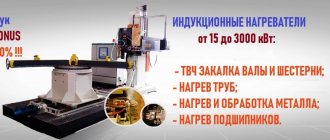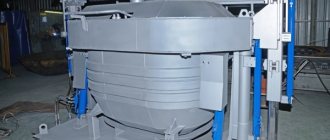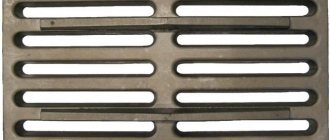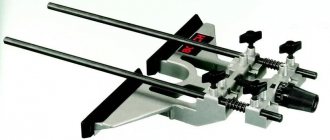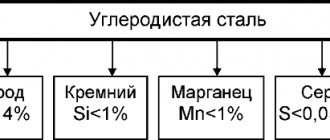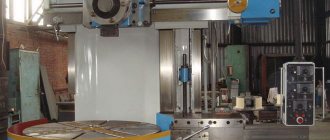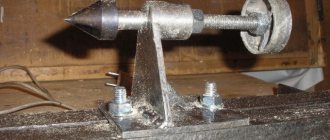Muffle furnaces are by no means modern devices. The idea of creating kilns for firing ceramics and heat treating metal or glass originated quite a long time ago.
The main feature of a muffle furnace is the ability to heat the material indirectly, that is, without direct contact with a flame or other heat source.
The basis of the design is the muffle - a ceramic container that performs several functions at once.
- Firstly, it isolates the material from fuel combustion products (gases, ash, tars).
- Secondly, ceramics ensure a uniform supply of heat inside the chamber.
Thus, muffle furnaces can serve as devices for carrying out production processes and laboratory research.
View this post on Instagram
Publication from Kovaleva Natalia (@kovaleva.gallery)
Modern ovens run on electricity. At first glance, it may seem that with electric heaters there is no need for a ceramic capsule, but this is a mistaken opinion. Firing ceramics or heat treating metals are complex processes, and the necessary conditions for their implementation can only be created in muffle furnaces.
Electric muffle furnace - what is it?
A muffle furnace is equipment that allows you to create optimal conditions for laboratory research and production processes associated with heating materials and products. The vast majority of these units are powered by electricity. To ensure that Electric Furnaces optimally suit their purpose, they are made from high-quality materials.
When working with muffle furnaces, it is necessary to strictly adhere to safety regulations
History of muffle furnaces
Muffle furnaces were first used in France. Their appearance is associated with the name of the famous carriage maker Jeanto, whose family built carriages for the royal court and noble nobles. He invented the steering trapezoid at the end of the 17th and beginning of the 18th centuries, but its tests were constantly frustrated due to the breakdown of the experimental axles. The situation changed for the better when a Russian nobleman came to the master, who wanted to order the famous European carriage maker to make a luxurious carriage. It was supposed to be a gift from Peter the Great to the Khan of Bukhara.
After testing the axle's strength, this customer told Jeanto how to improve it. First, it was necessary to perform cementation in a muffle made from a material that included powdered cattle horns. And only after that carry out hardening. This processing technology allowed the steel to remain viscous on the inside, but have a hard, hardened crust on the outside.
The muffle furnace, designed by a French master, was called the axle construction system
Areas where muffle furnaces are used
The muffle furnace is used in many areas; its application is quite wide. The device is necessary for heat treatment, as well as storage of various samples and materials under certain temperature conditions.
Let's figure out why a muffle furnace is needed; the equipment is used for:
- Hardening, tempering, melting and other operations with metals.
- Thermal firing of ceramics.
- Ashing and cremation.
- Drying of all kinds of substances.
- Analytical research.
- Growing single crystals.
- Production of jewelry and souvenirs.
Muffle furnaces are used when working with dental materials, precious metals and other types of materials
Main types of muffle furnaces
All types of muffle furnaces can be divided according to the following characteristics:
- Purpose (industrial, laboratory, jewelry, educational).
- Type of construction (horizontal and vertical loading, tube furnaces).
- Processing medium (air, gas, vacuum).
- Weight (from 18 kg).
- Working chamber volume (from 3 l).
- Heating level (moderate, medium, high temperature).
If we take a closer look at the muffle furnace and what it is, then the models can be divided according to the type of heating into electric and gas.
Muffle furnaces can be used for laboratory and educational purposes, industrial, jewelry, etc.
Advantages and disadvantages of muffle electric furnaces
What is a muffle furnace? It is a heating technique that has a wide range of operating temperatures and ensures precise adjustment. In addition to the convenience of loading and unloading processed materials, the advantages of heat-generating devices include:
- Uniform heating of materials without temperature changes.
- Cooling rate of samples after heat treatment to proceed to the next production stages.
Sealed door closures minimize heat loss and increase efficiency
But a muffle furnace, the purpose of which is to expose surfaces to high temperatures, also has a number of features that some users consider disadvantages. These include:
- Inability to use equipment at temperatures above 1300° C.
- The relatively low thermal resistance of the muffle, which determines the number of thermal cycles withstandable (heating-cooling).
- The need for additional electricity to heat the muffle itself.
Muffle furnaces are characterized by significant thermal inertia, which in different cases is considered as a plus or minus of the equipment
Criterias of choice
The muffle furnace is selected taking into account the possibility of creating the necessary conditions in the chamber, dictated by the area of application. Particular attention is paid to the following parameters:
- permissible load. Units with a power of up to 5 kW can be connected to a household network. For more powerful stoves, a three-phase 380 V network is required.
- temperature regime. Devices with heating up to 900° are used for working with ceramics; for laboratory purposes, models with temperatures above 1100° are suitable.
- functionality. Each process requires a unit with a certain size, weight, and method of loading materials.
- chamber volume. To perform different operations, ovens with different volumes are chosen. For laboratory work, a furnace with a volume of up to 30 liters is sufficient; firing of ceramic products will require a device with a chamber of up to 200 liters.
Among the advantages of muffle furnaces, one can highlight a variety of technical characteristics, thanks to which you can choose a unit of the required volume, temperature regime, and size.
In our online store you can purchase a wide range of muffle furnaces in different price categories. Contact us!
How does an electric muffle furnace work?
The working capacity of an electric muffle furnace is the so-called muffle. This is a ceramic or fiber tank of a semi-cylindrical shape, the heaters in which are built into the walls, i.e. are internal or closed. There are electric furnaces for ceramics and porcelain with stationary muffles, as well as those equipped with a stationary heating chamber and a replaceable muffle. In any case, when the heating elements are closed, the processed materials and objects are protected from direct radiation from the heaters. And those, in turn, are protected from exposure to aggressive vapors and volatile substances released during heating.
Muffle furnace design
What does the design of an electric muffle furnace consist of?
An electric muffle furnace is a device consisting of several elements:
- Working chamber . Various substances and objects are heated in it.
- Housings _ Performs protective and heat-insulating functions.
- Heating elements . Ensure the performance of thermal operations.
The wire or tapes are located in the chamber; they can be partially or completely open or completely closed.
Operating principle of a muffle furnace
Considering the muffle furnace, its structure and principle of operation, we can say that over the past centuries the equipment has gone through many transformations and has changed. Only the essence of its functioning remained unchanged. Parts or substances placed in the muffle are isolated from the external environment and heated evenly on all sides.
Harmful substances that may be released from samples during heating are removed using a ventilation system. In addition, the ovens provide natural or forced convection
Heating elements of muffle electric furnaces
As can be seen in many photos, the muffle furnace performs heat treatment thanks to heaters. They can be of different shapes and sizes. Depending on these indicators, different numbers of work items may be required. They are located around the entire perimeter of the loading block, and may differ:
- Design (tubular, tape, spiral, etc.).
- Manufacturing materials (nichrome, fechral, tungsten, chromite, etc.).
- Method of arrangement (closed, open).
The most common form of heaters is a spiral made of wire with excellent heat resistance and resistance.
Electric muffle furnace control system
A modern muffle furnace is a device that makes it possible to process various materials and is easy to use thanks to control modules. Today, mechanical, analog models are used less and less; they have been replaced by electronic and programmable thermostats. With their help you can quickly and clearly:
- Set any thermal values.
- Set gradients and switching times.
- Monitor current thermal indicators.
- Carry out heat treatment with high precision.
- Set heating times and temperatures.
- Determine the holding period and cooling time, etc.
Modern modules allow you to program even complex operating cycles of equipment
OCCUPATIONAL SAFETY REQUIREMENTS DURING WORK
3.1. Do not fill the bucket to the top with metal. 3.2. When monitoring the melting of metal in a furnace, use special glasses or a viewing glass. 3.3. When removing the ladle from the furnace, stand at a safe distance from the molten metal and move the ladle with molten metal carefully, without spilling the liquid metal. 3.4. Stand as far away as possible from the mold being poured or just poured with molten metal. 3.5. Avoid striking the ladle with molten metal. 3.6. Do not leave metal at the bottom of the ladle, do not place the ladle in a damp place. 3.7. Slag and metal residues should only be cleaned with dry and heated materials 3.8. Do not introduce cold materials into the ladle with molten materials 3.9. Clean up any accidentally spilled molten metal immediately.
Buy a muffle furnace or make one yourself
It is quite possible to figure out how to use a muffle furnace on your own, but how to make this device is not entirely easy to understand. Having considered even an incomplete list of necessary starting materials and a schematic description of the construction process makes it clear that independent production of muffle furnaces is quite a complex matter. The market offers a large selection of different models, which allows you to find the best option.
Workers in laboratories, workshops and workshops know what a muffle furnace made in strict accordance with technological requirements means - the equipment not only speeds up many processes, but also allows them to be carried out with extreme precision.
Making a muffle furnace at home
How to make a muffle furnace with your own hands
Regardless of the design of the muffle furnace, the design of the device will consist of the following elements:
- Muffle . It’s better to do it yourself and not try, because... you need ceramics with high thermal conductivity, which can only be provided by additives made of rare metals. Purchasing ready-made ceramic dishes from a laboratory equipment store will help you get out of this situation.
- Fireproof. As the first layer, you can put asbestos boards and fiber, as well as fireclay bricks, which will be the cheapest in cost. For the bond, it is better to take a fire-resistant mixture for masonry.
- Frame . Many home-made refrigerators use old refrigerators, which must be strengthened, especially the bottom. This can be done by welding a steel rectangular angle.
- A heating element . There are ready-made spirals, but if you wish, you can wind them yourself from nichrome or fechral wire.
Basalt wool is used for reliable cladding of the body
Tools and materials for making a muffle furnace
The use of a muffle furnace is relevant in various fields. Depending on the operating conditions and the type of samples being processed, the following are used for the production of equipment:
- Structural steels . They are used to make the body (casing), support, door and some other elements.
- High alumina materials and fire retardant fiber . They are used to construct working chambers - muffles.
- Nichrome , fechral, tungsten, molybdenum, tantalum . These and other materials serve as the basis for the heating elements of a muffle furnace.
- Fiber pressed blocks . They form a highly effective thermal insulating shell (lining).
A prerequisite for the materials used is environmental friendliness, heat resistance and impact resistance
The following tools are used to create an electric muffle furnace:
- Drill and set of drills.
- Grinder, cutting and grinding wheels.
- Welding machine, electrodes, clamps and magnetic corners.
- Hacksaw.
- Screwdriver.
- A tape measure, a metal ruler and a construction square.
To construct a muffle furnace you will need tools for working with metal and wood.
Step-by-step process for making a muffle furnace
Before you start designing, prepare a drawing of a muffle furnace, all the data in which will be derived using formulas and precise calculations. Make sure you have all the necessary components and accessories. After preparing the components, their adjustment begins, among the many stages of which:
- Laying bricks on the bottom and walls of the future muffle furnace.
- Door sealing , which can be done using silicone, and sometimes a screw locking device is created.
- Heating coil gasket , etc.
When choosing the optimal volume of the working chamber, consider the size of the objects that will be processed
Basic calculations for the manufacture of muffle furnaces
Based on what the muffle furnace is intended for, its optimal characteristics and capabilities are selected. In order for the unit to operate productively and safely, many calculations need to be made. You will need to determine:
Parameters of the electric heater of the electric muffle furnace
What does a muffle furnace look like - a chamber with a door, inside of which there is a heater. Whether the unit will function depends on whether you select the components correctly. Among other things, it is worth paying attention not only to the estimated power of the heater, but also to its:
- Manufacturing materials.
- Accommodation.
- Constructions.
It is necessary to determine the cross-section and length of the wire that will be used to create the heater. For example, the minimum diameter for spirals from:
- Nichrome – (7÷10) × d.
- Fehrali – (4÷6) × d.
All calculations must be carefully checked to prevent rapid combustion of heaters and fire hazards.
2. Power and current of muffle furnace
In order for the muffle furnace, a description of the functioning of which can be found on various thematic forums, to fulfill all the assigned tasks, it is necessary to calculate:
- Power . You can find the optimal indicator based on the volume of the furnace. The table below shows the recommended ratios of indicators.
- Current strength . The formula used for calculation is: P÷U , where P is power, U is voltage.
The volume of the chamber is measured in liters, while the specific power is in watts
The optimal length of wire for an electric muffle furnace
Considering what the muffle furnace is used for, it is necessary to select the correct wire size. Having the value of its total and specific resistance used as heating coils, you can find the length of the conductor.
The resistance of the heating element (R) is determined by the formula U÷I , where U is voltage, I is current.
The current power affects the choice of wire cross-section - if components with insufficient capabilities are used, too much current will quickly overheat them, melt them or cause burnout
Specific surface power of an electric muffle furnace
Some models of muffle furnace can produce different amounts of thermal power. A conductor generates a certain amount of energy over its entire area. It is possible to determine what this indicator should be so that the surface does not lose its operational and mechanical properties. It is not recommended to exceed the permissible value, otherwise the spiral will quickly fail. To avoid this, it is necessary to make a miscalculation with a larger diameter wire or increase the length of the heating element.
The indicator βadd using the formula: βeff × α , where βeff is the effective specific surface power, α is the efficiency coefficient of the thermal radiation of the spiral.
At the intersection of columns and rows the value βeff is formed
As you can see, the design and operation of a muffle furnace is a complex system. You can learn more about the capabilities of the equipment from specialists. Call us, we will select for you the optimal type of electric furnace for any purpose!
